Spiray gray is a fast-growing and a long-scale shrub belonging to a large family of rustic. At the beginning of May (depending on weather conditions), many white small flowers appear on his branches. And there is such a flowering approximately 45 days. From afar it seems that this is a pure gentle snow closed a bush. The plant is unpretentious, suitable for parks, allests and country sites. The features of the accommodation and cultivation of Spiray are gray and will go further in our article.
Sperery General Information
There is a remarkable property from the branches of Spiray - they are beautifully bent and look very elegantly. This served as a reason to give the plant Latin name - Spiaea. It was formed from the Greek word, sounding like "Speira", that is, "bending". Known historical facts indicating that in ancient times, people were made from the elastic branches of this plant whip and shompol. But then in the people the shrub was called Tollgoy. There are already about one hundred species growing up mostly on forest-steppe, steppe and semi-desert areas in the SPIRIA Rhodium. All representatives of the kind are leaf falling shrubs, their height is up to two meters, and the form is diverse - a reprehensive, molding, cascade, pyramidal, spherical, whipping. They differ in the painting and form of sheet plates. Their flowers are small, form inflorescences - "umbrellas", "shields", "sweatshirts", "spikelets", "pyramids". Some spiries bloom in the spring (for example, Spiriya gray, dubberless, nipponskaya, gorgeous, witty, Tunberg, Wangutta), others - in summer (Japanese spirea, island, berethous, white-color, paper, Douglas, Billard).
Spiray Description Gray (ash)
This species was obtained in 1949 in Norway by the method of hybridization, for whom Spiray of Belish-gray and Hyverobee, were taken. This kind was given such a Latin name - Spiaea X Cinerea. The shrub is strongly branched, his shoots are ribbed, felt, there are gray-green pointed leaves on them, the lower side of which is significantly lighter. Flowers in Spirea gray have a white color, are placed in loose "shields. The height of the arcooked bush can be from 90 centimeters to two meters, in May-June its diligent branches are covered with snow-white inflorescences. By the end of June, the fruits are already present on Spirea gray.
All the most decorative and attractive managed to assemble in the sort of Spiray with sulfur "Greps". In the people, it is also called the "bride" or "May snow". After all, in May, during flowering, the arcuate shoots of this bush are covered with snow-white inflorescences formed by terry flowers. Thanks to the roundabout crown, an association with a fountain occurs. And even after flowering, the shrub looks peculiar - the red-brown branches form arches, on which there are many lancet-eye leaves of gray-green painting. Autumn "paints" these leaves in bright golden-yellow tones. Every year, Spirae Gray adds in height of 20-25 centimeters, in a few years its height will be 150-200 centimeters. This is a good honey, attracting in the garden and in the beds of insect pollinkers.
How do we use a sullen in landscape design?
For unpretentiousness, frost resistance, early and long flowering spirire appreciate gardeners and landscape design specialists. There are several ideas to accommodate this beautiful shrub. The elegant spring composition turns out if you settle down a coast of Spiray with gray next to tulips (red, pink, burgundy), crocuses, daffodes, primoses, alissum. If the spirires of one or different species put along the fence or grid-slave, then in a few years it will turn out a tender "live" fence. You want the spirire to raise you throughout the dacha period, take several different seedlings, then in the spring and at the beginning of the summer will bloom Spiray gray, then the Spiray of Wangutta will connect, she also has white flowers. For a variety in the "live" hedge, you can add a dubboltic spire, which will give "shields" with creamy flower.
And in the second half of the summer, other spirires are blooming - Ival (pink-red inflorescences), Japanese and Billard (pink inflorescences of different shades).
Do you like a variety? Then place in your garden not far from each other with a sutile, forzing, lilac, dealer, juniper.
And how originally and unusually look "soda" during the flowering of Spiray, planted by rockers along the alley on the background of ash and kleov! And between them there are floral flower beds with lilac and red tulips, blue and purple poles.
Landing with sulfur spiria
Plan the landing of this kind of spirea is best for the autumn months. Moreover, "settle down" the new tenant in your garden (or at the local area) must be completed before the leavefall is completed. If it happened that the sapling has in the spring, then it is necessary to "attach" it until the leaves are dissolved. It is noticed that those specimens are preserved and faster, which are planted in cloudy weather, or when it rained rain. Acting Spiraei is developing at sunny places, and they bloom there is more abundant. Spereray landing is possible and in a full-warning place.
The pit for a seedling is so much so that it has a much larger its root system, on average its size (depth and width) 50 × 50 cm. Place the drainage layer (small pebbles, pieces of bricks). Experts advise you to leave such a pit for twist for two days. If the roots are dry, then for a while put a seedling in a water bucket. Forers inspect, remove damaged and shorten too long of them. At the planned time of landing in the pit, send a pre-prepared mixture of a turf and peat ground and river sand. Scatter the root system along this hilly, pour it off the remaining earthy mixture, carefully wrap my foot. It is important that the root cervical seedman is to flush with the surface of the soil. If there are several seedlings, leave a distance between them at least a meter, given that each bush is also growing in width. Next, proceed to the first watering, bring one or two waters for moisturizing the soil. And stock peat to carry out mulching around the planting layer in five (or more) centimeters. Soothes can shorten one-third. The first spiree flowers will show you on the second or third year after landing.
Recommendations for the care of spirires gray
We are thinking of gardeners by caring for this plant very easily and unfall. Since Spiraeai has a gray urine root system, which has a shallow, the land under it should be wetted. If there are no precipitation for a long time, then at least twice a week, water these bushes. If there is an opportunity, then the irrigation of the earth is spent more often. Other simple components of the care of spirires are shallow loosening of the soil around, elimination of weeds. The cropping of the Spiray of the gray, relating to the Rander-flowing species, has its own characteristics. This spiray has floral kidneys to be laid almost along the entire length of the eve of last year. Therefore, you should not carry out their spring trim every year. If parts are removed with floral kidneys, then in this season there will be no flowering. But slightly reduce the size of the bush, give it the desired form - you can. To do this, you only need to shorten shoots. This manipulation is also a little bunning. If in the spring you will notice that the tips of the shoots jammed, then they must be shortened.
Outdated shoots from a sprayer shrub are gray cut every 7-10 years. When the bush becomes old, it can be rejected by cutting, as they say - "on the stump." Then, from sleeping kidneys, located next to the root neck, the sharp will develop. Let the young pig string be growing up, and then you can form a new bush, while leaving six strong shoots you like. Other shoots will have to just cut.
Forming and sanitary types of trim are carried out annually in April. At the same time, weak, broken, damaged twigs, aging shoots are removed.
Now let's talk to Spirey. They are desirable to spend after spring trim. You can take a strongly diluted dung alive (korovoik or keenak) for watering. Next, it should be done by watering the plants with water, into which the superphosphate is added (for each bush enough eight grams). So that the bushes bloomed the bushes of your gray spirea, in the spring can take advantage of the fertilizer granules, called "Kemira-Universal" it will need to take about 90 grams per square meter of soil area.
With such a concern, the Spirahi bushes are very fully developed and bloom for 20-30 years.
Summerly love snails, so you can spend early spring and after flowering prophylactic spraying with the help of a "phytodener". Much less often, the spirits are repulsed by other pests - the wave of Miner or the Rotary leaflets (ricking the leaves of the caterpillar), as well as spider ties.
The failure is intensively sucking the nutritious juices from leaves, flowers and young gentle spirea shoots. At the first signs of its appearance, spray their plants with informs of Celebre, burning pepper, garlic, wormwood. If the tribes and previously listed pests are much, then you will have to use the "AcTellik", "Bitoksis Battle", "Pyrimore", "etaphos".
Bowls make on the shrub of the web and damage the leaves on which whitish specks appear, and then their premature yellowing, drying out. If the summer was dry, then to prevent the development of the web ticks, try to spray your spirits with ordinary water. If these pests are too much, then do not do without the treatment of Karboofosomed bushes, "phosphamide", "Fosalon", "Akreks".
From fungal diseases, spare leaves can hit septoriasis, ascohithosis, ramularity, then on them you will see the specks. For the treatment of plants, you can use "Bordeaux liquid", "Fundazole", colloidal sulfur. Processing is allowed to be carried out before flowering or after it.
Spiray gray shows an absolute winter hardiness even in winter with harsh frosts. I don't like it only wintering when there are sharp fluctuations in temperatures. In the first years, underground parts of young spirits can be inspired by peat or dry foliage.
About the reproduction of Spiraray Gray
Recall that the origin of Spiray is sulfur hybrid. Therefore, seeds do not multiply it, but they use vegetative methods most often - shifting and grain. Cuttings cut immediately after flowering. They are placed in the substrate, for example, consisting of peat and coarse river sand. Hold them "under the cap" (mini-guy or five-liter bottle of plastic, which has trimbed bottom). Watch that the soil is constantly moistened. If you want to improve the percentage of rooting, then after the cuttings cut off, for 16 hours, perform them to treatment with an indolylmalaic acid stimulator solution (at a concentration of 0.01%). Either let them last 6 hours in the water, where the droplet "Epina" is added, and then seed the sections of the Coreneve Powder, and then the lower part of the cutting in the ground. In front of the winter, you definitely, these cuttings generously cover the foliage.
The reproduction is carried out so. In the spring, hurt several twigs to the surface of the earth, place close to the supper pinch, placing in the recess. Spray itself pinpoint. Place the pinching in the desired number of land. These shoots will have to be covered with dry foliage in the fall. In the spring, the rooted escape can be separated from the parent plant and transplant.
As you can see, there are no difficult stages in the care of spirires. A lot of time at the summer houses, these bushes do not take away. Contemplation of Spiraray shoots with gentle little white flowers soothes, causes the appearance in the head of good thoughts, reveals positive emotions, and a desire appears a little to dream about pleasant.

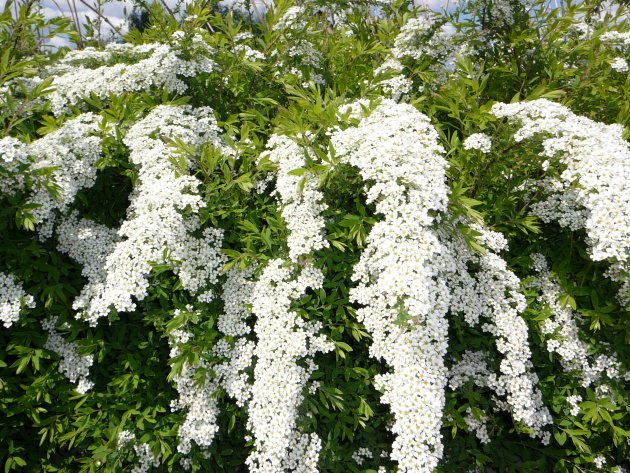
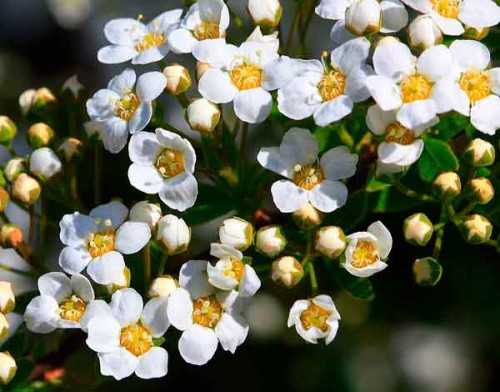
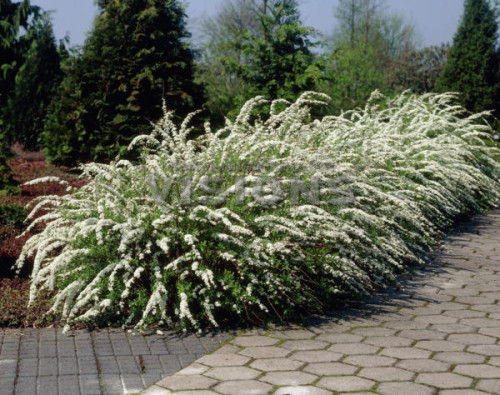
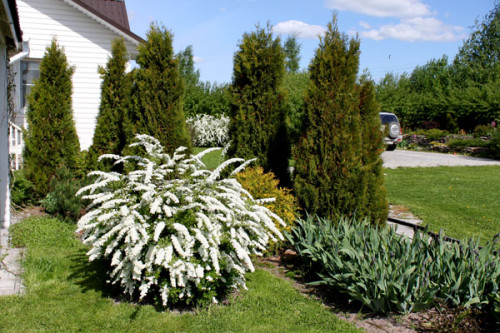
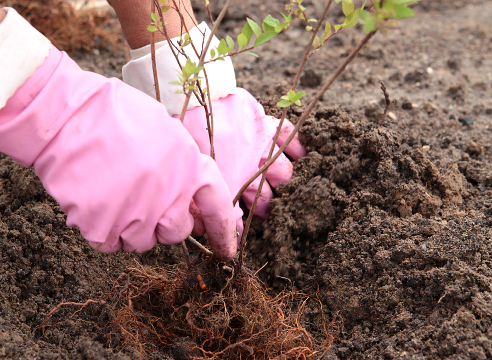
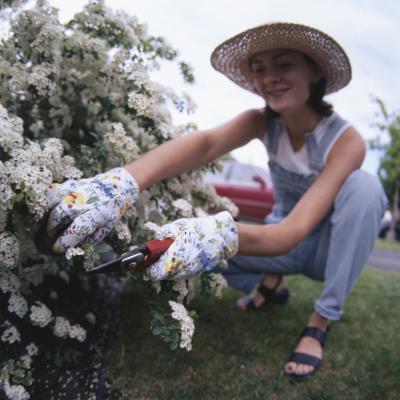

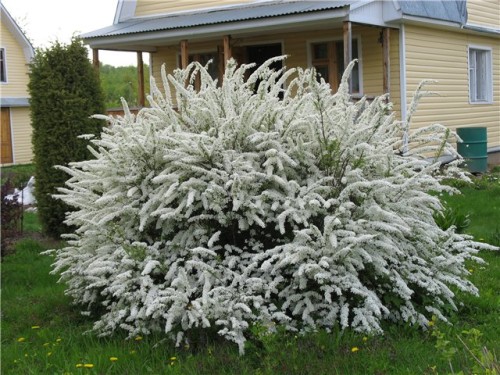
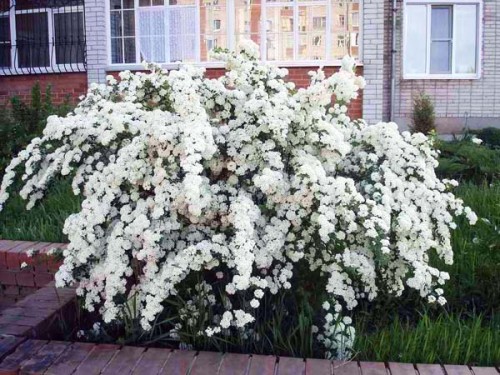

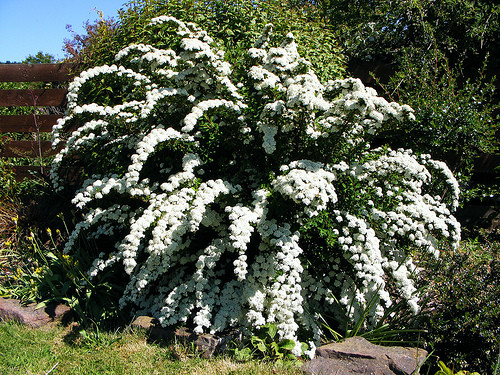












 Start a discussion ...
Start a discussion ...